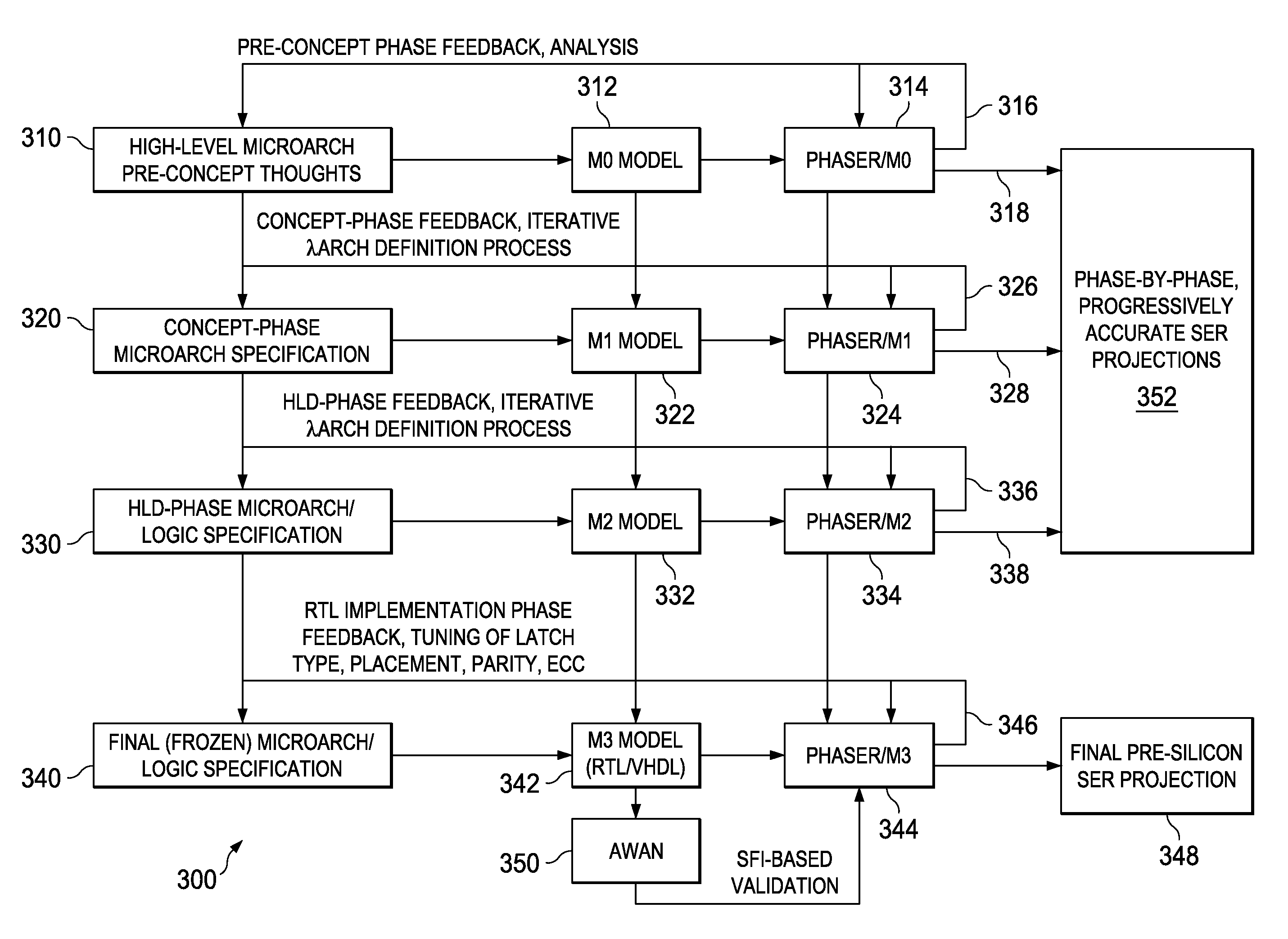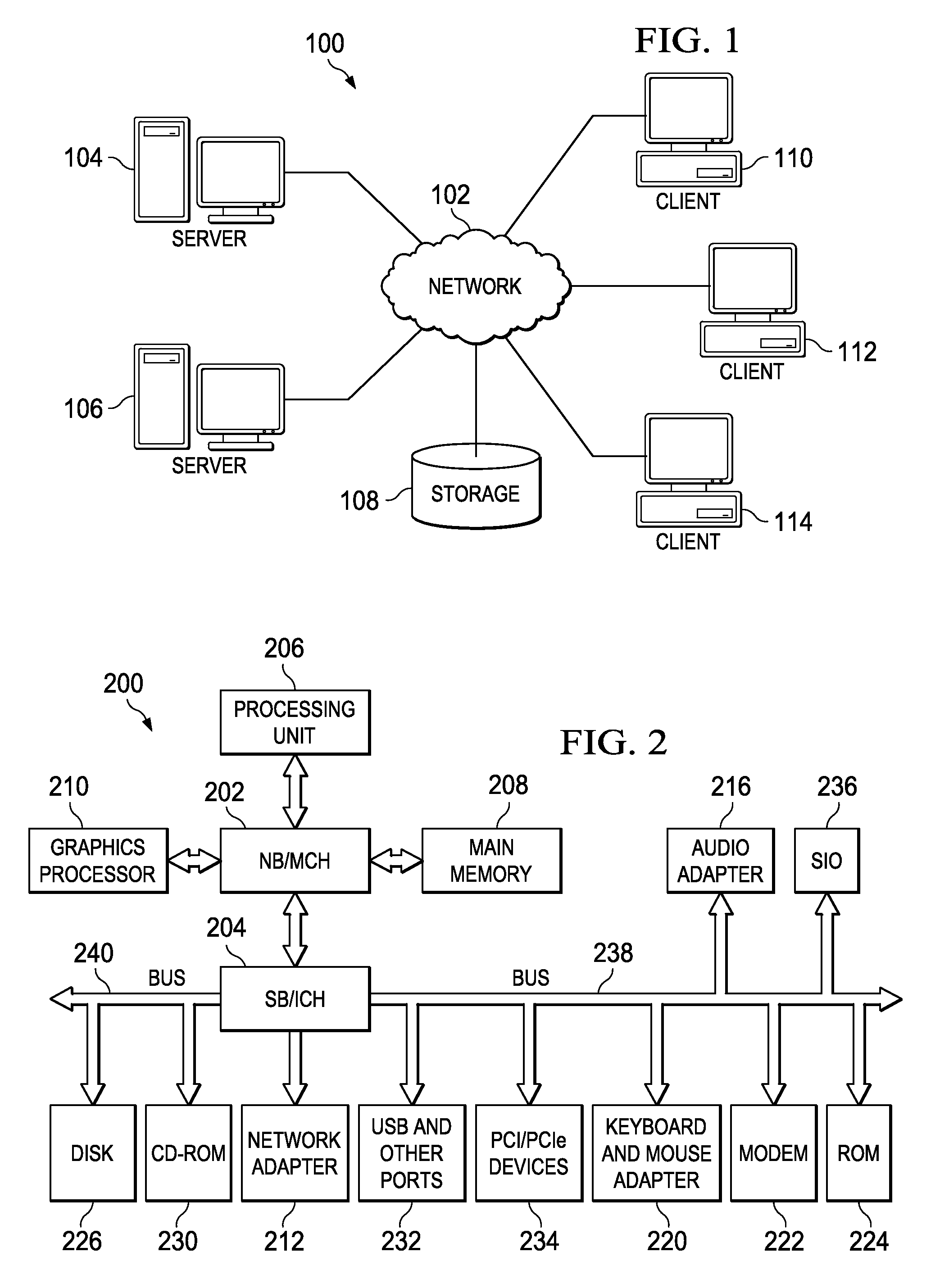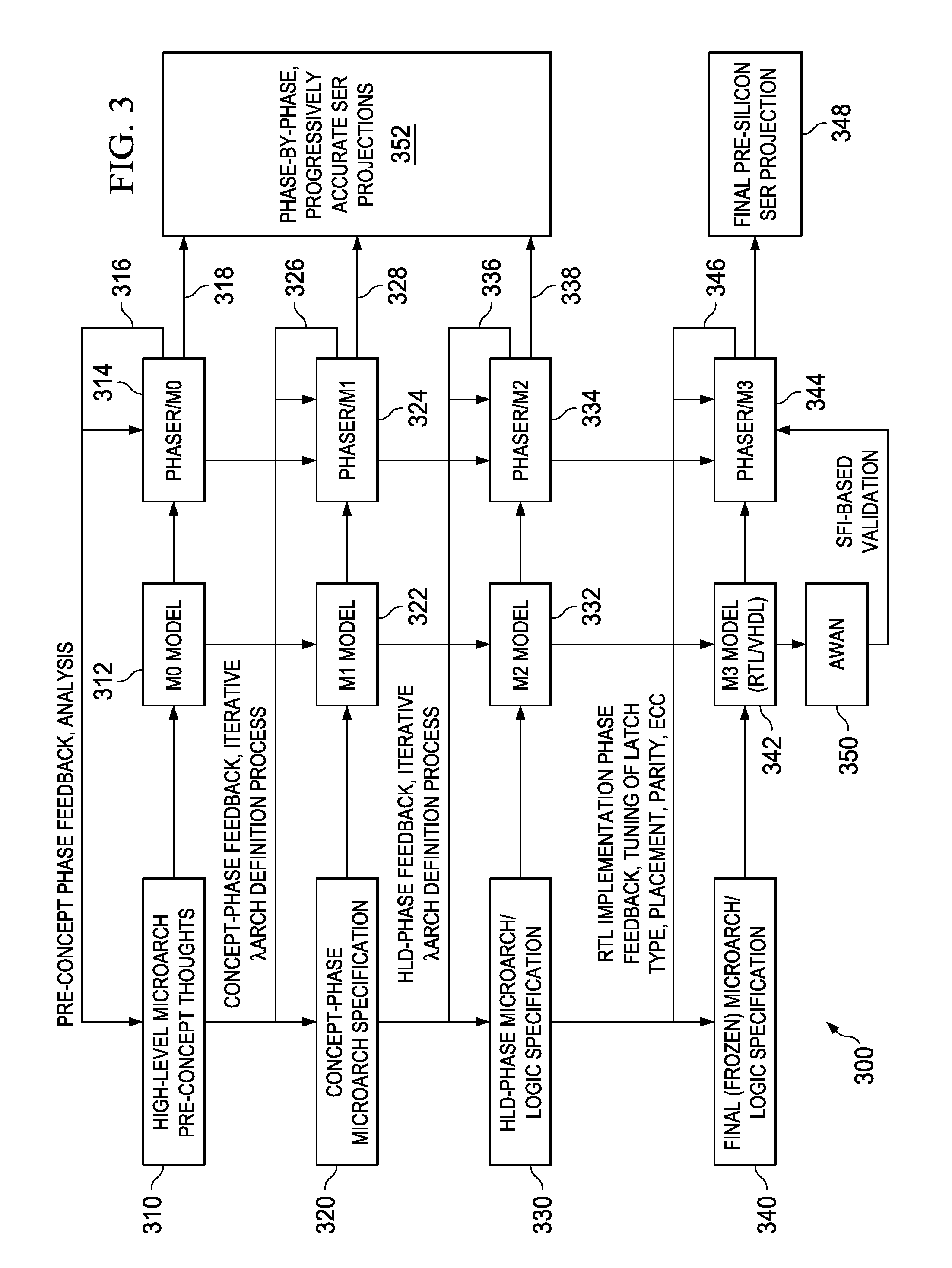Modeling System-Level Effects of Soft Errors
a technology of soft errors and system-level effects, applied in error detection/correction, program control, instruments, etc., can solve the problems of transient/soft errors, which will continue to be a serious threat to the general technology of robust computing, and may occur transient errors
- Summary
- Abstract
- Description
- Claims
- Application Information
AI Technical Summary
Benefits of technology
Problems solved by technology
Method used
Image
Examples
Embodiment Construction
[0018]Because of the predicted increase in Soft Error Rates (SERs), it is important to have accurate estimates of failure rates during the design phase of integrated circuit devices. To understand why there is the need for accurate estimates of failure rates during the design phase, consider a hypothetical mid-range (16- or 20-way) high-end server targeted to have a mean-time-to-failure (MTTF) of about 50 years. This translates to a per-processor Failures In Time (FIT) rate of around 125 FITs, based on today's SER data. FIT is a common unit for measuring failure rates where 1 FIT means an average of 1 failure in one billion hours.
[0019]To build a future large-scale petaflop supercomputer with, for example, 400,000 microprocessor cores would imply an aggregate processor core MTTF of less than 1 day and a potential full system hardware MTTF of less than 1 hour, taking into consideration all the system nest and fabric. This is clearly unacceptable. Thus, chip-design, according to the i...
PUM
 Login to View More
Login to View More Abstract
Description
Claims
Application Information
 Login to View More
Login to View More - R&D
- Intellectual Property
- Life Sciences
- Materials
- Tech Scout
- Unparalleled Data Quality
- Higher Quality Content
- 60% Fewer Hallucinations
Browse by: Latest US Patents, China's latest patents, Technical Efficacy Thesaurus, Application Domain, Technology Topic, Popular Technical Reports.
© 2025 PatSnap. All rights reserved.Legal|Privacy policy|Modern Slavery Act Transparency Statement|Sitemap|About US| Contact US: help@patsnap.com



